Knowledge Sharing
Commercial Renovation: Steps to Plan a Successful Project
When your space needs renovating, you are faced with a multitude of decisions and challenges. Equipping yourself with the tools for a successful project takes time, understanding, and a broad view of what the process looks like, from start to finish. With those resources, you’ll be ready to pursue a phenomenal commercial renovation with ease.
But first—let’s start with some basics.
What is a commercial renovation for businesses?
A commercial renovation updates or alters the interior or exterior of a building used for business purposes. Commercial renovations include offices, retail and hospitality spaces, restaurants, medical office buildings and other commercial properties. The goals of a commercial renovation might be to improve functionality, enhance aesthetic appeal, or adapt the existing structure to fit the needs of a new tenant.
Commercial tenant improvement (TI) contractors play a central role in a renovation by working closely with property owners, property managers, architects, tenants and construction managers to bring a tenant’s vision for the space to life. They handle everything from securing building permits to finding ways to save on costs. The right partner can ensure that every aspect of the renovation meets specific business needs, complies with local building codes, and finishes according to the pre-planned construction schedule.
Types of Commercial Renovation Projects
Commercial renovations are designed to upgrade, expand, or transform existing commercial spaces. Contractors specializing in commercial renovations undertake these projects to meet specific business needs and ensure regulatory compliance.
Office Renovations
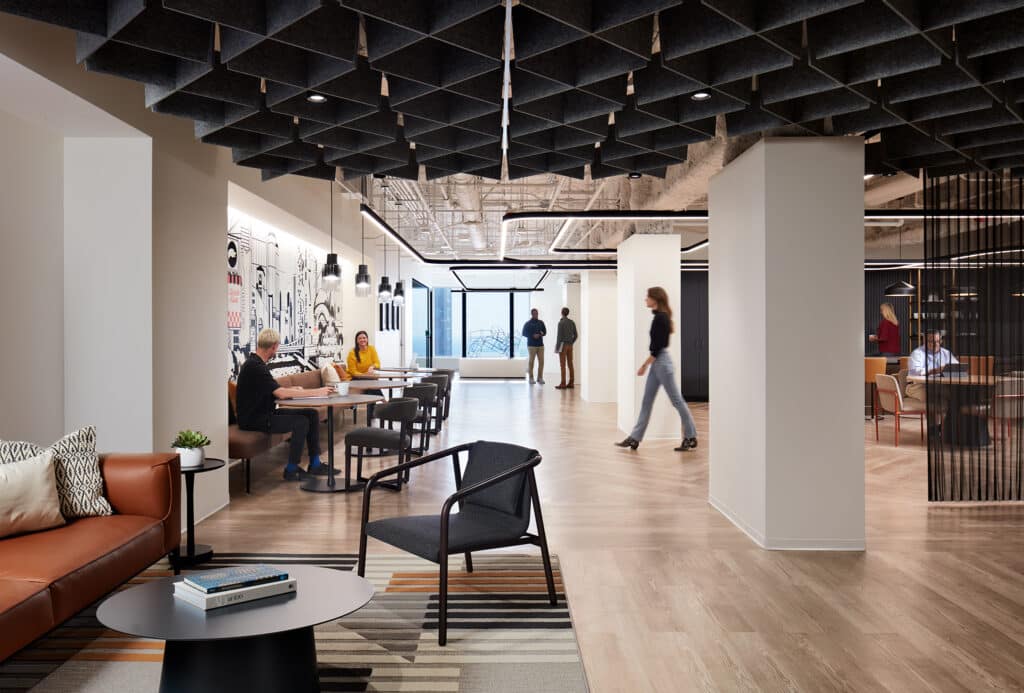
These projects often include commercial remodeling to update layouts, add new workstations, upgrade technology infrastructure, and refresh common areas. Sometimes interconnecting stairs, commercial kitchen, recording studios and other features are included.
These investments can help to boost employee morale and productivity. The goal is to revitalize office space to improve functionality, enhance aesthetics, or accommodate the needs of each employer’s staff.
Life Sciences Facility Renovations
Commercial renovations for the life sciences industry have to combine form and function to create spaces that support innovation and collaboration. Each life science tenant will have unique needs based on the types of biology or chemistry work that they do.
A general contractor specializing in life sciences facilities can ensure that a build-out meets functional requirements across the tenant’s entire operation. At the same time, amenities like fitness centers, eateries, and lounge areas can help support a tenant’s ability to recruit and retain top scientists.
Hotel and Hospitality Refurbishments
Commercial buildings in the hospitality sector require frequent renovations that aim to update guest rooms, lobbies, and amenities such as gyms, conference rooms, and restaurants. The goals vary depending on the specific commercial space. The focus is often on improving guest satisfaction by offering modern comforts and an updated aesthetic.
Healthcare Facility Updates

Medical office buildings, clinics, and hospitals need renovations to keep up with advancing healthcare technologies while enhancing patient comfort and privacy. The scope of these projects may include remodeling patient rooms and waiting areas, or upgrading medical equipment facilities. Indoor air quality and other factors are important elements when renovating healthcare facilities.
Retail Store Upgrades
Retail renovations often focus on redesigning existing commercial spaces to make them more appealing to customers. This can involve the demolition of dated spaces and the replacement of improved lighting and displays, new finishes such as flooring, tile, cabinetry, and wall coverings, new restroom finishes, and integrating technology for easier product browsing.
Benefits of Commercial Building Renovation
Renovation is often required when a tenant seeks to transform the space for new or varied purposes. Molding a space to fit unique needs benefits the client first and foremost by providing an appealing and functional environment that allows the best productivity and well-being of the business.
Beyond comfort and client satisfaction, renovating a commercial building boosts the property’s value and attracts more customers or tenants. Similarly, sustainable updates to the building can improve energy efficiency and reduce long-term utility costs. Renovated spaces often require less maintenance, saving tenants money on repairs.
Commercial TI contractors specialize in building modern spaces that meet current market demands. When sustainable building practices are used during the remodeling process, commercial spaces become more attractive and efficient.
Planning for Commercial Renovations
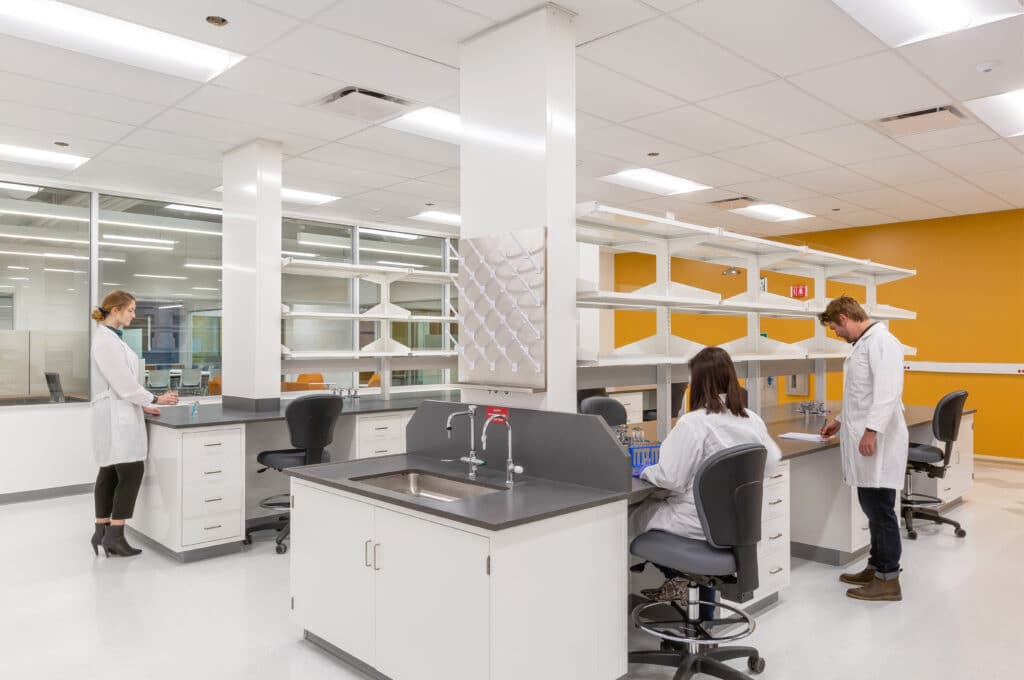
Effective renovation planning involves outlining specific goals, determining a realistic timeline, and identifying all necessary resources. Budgeting requires a comprehensive analysis of costs related to construction materials and lead times, labor and permits.
For successful commercial office renovations, planners and stakeholders must work together to ensure that every aspect aligns with financial constraints while achieving desired outcomes. Allocating funds for contingencies is a crucial element of budgeting that can prevent delays.
Building a solid plan also includes selecting experienced professionals who understand commercial office construction inside and out. Experts provide valuable insight into cost-saving tactics without compromising quality or building code compliance.
Commercial general contractors who specialize in building renovations can select the best subcontractors to get the job done, helping to stay within the budget and maximize the speed of project delivery.
Factors to Consider During Planning
There are numerous factors to consider before launching a commercial renovation, including:
- Space Utilization: Ensure that the renovation aligns with the functional needs of the space. Hire a commercial architect to guide this process.
- Compliance and Regulations: Stay up-to-date with local building codes and regulations to avoid potential setbacks or legal issues. Hire a commercial general contractor who specializes in commercial renovations to guide the permitting and building code process.
- Scope and Objectives: Define the scope of work and a clear renovation timeline to maintain focus throughout.
- Sustainability and Energy Efficiency: Integrate sustainable practices and energy-efficient solutions for long-term cost savings and environmental benefits. Determine if you plan to seek LEED or Well certification as part of your commercial construction goals.
- Material Selection: Choose materials that align with your design vision while considering their maintenance requirements. Supply chain and lead time issues persist. Therefore, having options and carefully managing timelines is a critical role for your general contractor through this process.
- Contractor Expertise: Select a reputable contractor with experience in commercial renovations to ensure high quality work. Consider whether hiring a 3rd party construction manager would also benefit your company throughout the process.
- Timeline Management: Establish realistic timelines for each phase of the renovation, considering potential delays and allowing flexibility in scheduling.
Project Management for Commercial Renovation
Construction management firms can play a major role in efficiently managing timelines, resources, and communication among all parties. It’s a central role that supports the successful completion of the renovation within budget limits.
They assist in selecting the general contractor and coordinating both the general contractor and architect. They manage the client’s suppliers and vendors for essentials like furniture, IT, and Audiovisual. They also act as the point of contact for internal stakeholders within the tenant’s company.
A construction management firm will consistently monitor progress, maintain productivity, and resolve issues that emerge during the renovation process. Construction managers are the glue that holds the whole project together, advocating for the tenant’s needs throughout the project.
Budgeting for Commercial Renovations
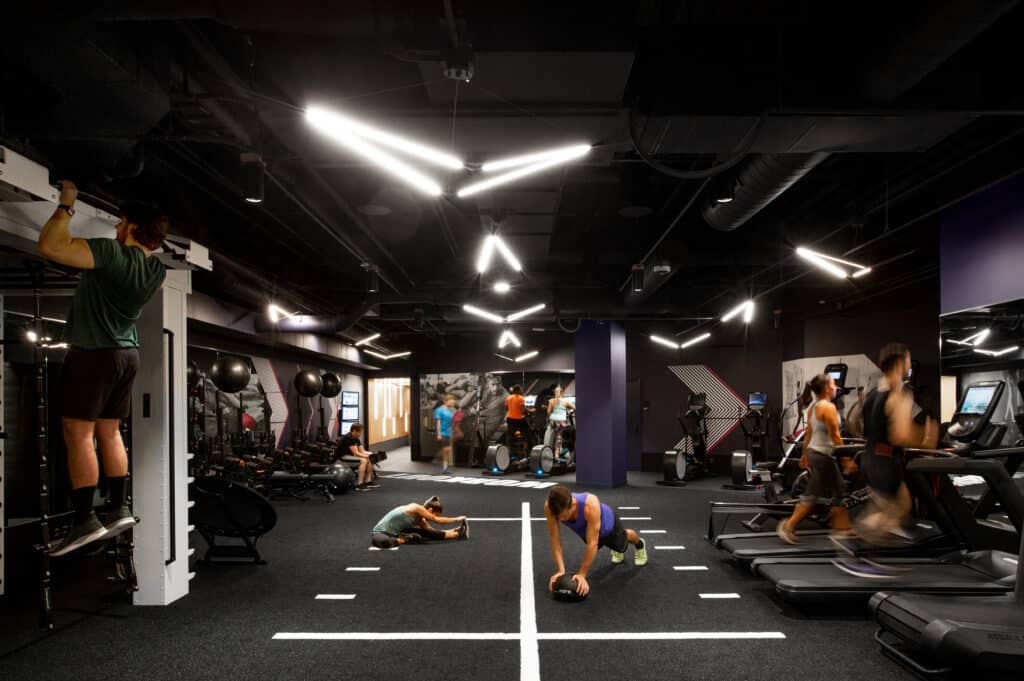
Commercial renovation costs can vary significantly based on the scope, materials used, and labor expenses. To budget effectively, it’s vital to conduct a thorough assessment of the specific renovation needs. Identifying key areas that require renovation will help estimate costs accurately. Obtaining multiple quotes from reputable contractors enables you to compare prices and select a cost-effective option.
Commercial Renovation Return On Investment (ROI)
Understanding the ROI of a renovation project will help justify the initial expenditure and set expectations for long-term benefits.
Increased Property Value
Commercial remodeling significantly increases the property value of a commercial building, offering a direct financial return that can be calculated per square foot.
Energy Efficiency
Upgrading systems to more energy-efficient models reduces utility costs, contributing to overall savings.
Attracting Tenants
A commercial remodel can deliver a modern, updated space that is more appealing to potential tenants, leading to higher occupancy rates and rental income.
Maintenance Costs
Updates decrease maintenance expenses by replacing older components. The resulting savings offset commercial renovation cost over time.
Branding and Image
A renovated business space can strengthen a company’s brand image, attracting customers and enhancing employee satisfaction, while also serving as a powerful asset in recruiting top talent.
Commercial Renovation Project Timeline and Process
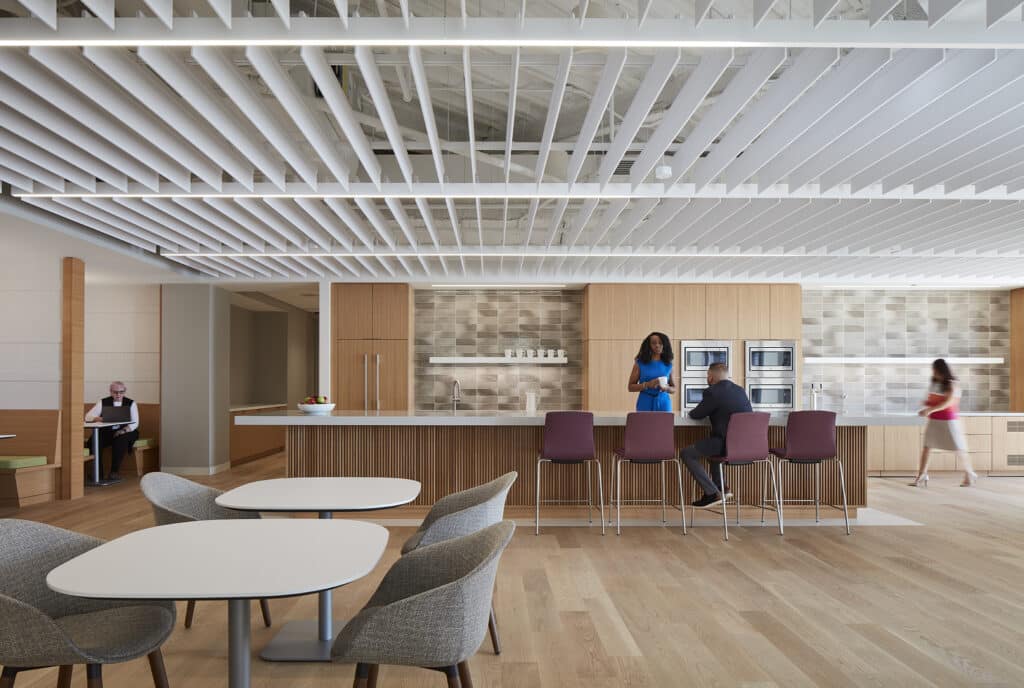
There are several key stages to commercial renovations. An understanding of what each entails will better equip you to handle the process overall and ensure a successful renovation.
Pre-Construction Preparation
The essential steps in the pre-construction phase include:
- Site Investigation: Conduct a thorough assessment of the site, including structural integrity, electrical systems, plumbing, and any potential hazards.
- Building Code Compliance: Ensure that all design plans comply with local codes and regulations before proceeding with any construction activities.
- Permit Acquisition: Obtain all necessary permits and approvals from local authorities to avoid delays or legal issues during the construction phase.
- Design Coordination: Collaborate with architects, engineers, and designers to translate designs into actionable plans that align with your goals.
- Material Sourcing: Source and procure construction materials, equipment, and supplies to avoid delays in the construction schedule.
- Schedule Development: Establish a timeline for each phase of the renovation project while allowing flexibility for unforeseen challenges.
- Risk Assessment: Identify potential challenges that may arise during the construction process and develop mitigation strategies to minimize their impact on the timeline.
These steps set the stage for a smooth transition into the subsequent phases of your commercial construction project.
Demolition and Uncovering Existing Conditions
This phase of a commercial renovation generally involves the following steps:
- Structural Assessment: Before starting demolition, an assessment is conducted to identify potential structural issues.
- Demolition Plan: A detailed plan is created for the orderly and safe removal of existing structures and materials.
- Uncovering Existing Conditions: As demolition continues, previously undetected areas such as water damage, asbestos, or mold may be uncovered.
- Inspections: Once conditions are exposed, if necessary, a professional inspection is carried out to evaluate the impact on cost and timeline.
- Documentation: Any unexpected discoveries are documented with photographs and detailed reports for future reference.
Permitting
The next step in a commercial renovation is obtaining the required permits. This will include processes such as:
- Understanding Local Regulations: Your general contractor will be responsible for specific regulations and requirements, such as constructing to the building codes, and coordinating required inspections by the building department or third party inspectors.
- Documentation Preparation: Gather necessary documents, including architectural plans, engineering drawings, and any other paperwork required for permit applications.
- Application Submission: Submit the complete permit application package with all supporting documentation to the relevant local departments.
- Review Process: Await the regulatory authorities’ review and evaluation of your permit application, which may include inspections and revisions to meet compliance standards.
- Permit Acquisition: Once approved, procure the necessary permits before commencing any construction or renovation work.
- Compliance Maintenance: Ensure ongoing compliance with permit conditions to avoid delays or issues during inspections or final evaluation.
Drywall and Framing
Drywall installation involves metal framing followed by hanging and finishing the drywall. Here are key processes that often occur during this phase:
- Material Selection: Selecting the right type of drywall for your commercial space, such as moisture-resistant or fire-resistant options as per building codes. Using high-quality materials for framing and drywalling ensures stability and longevity.
- Material Estimating: Ensuring that precise measurements and cutting techniques are applied helps control commercial renovation costs.
- Material Installation: Employing skilled professionals who adhere to industry best practices ensures precision and quality in the installation process.
Mechanical, Electrical, Plumbing (MEP)
The following are essential components of MEP processes that occur during renovation:
- Mechanical Systems: Ensure proper ventilation and cooling systems for a comfortable environment and fresh air.
- Electrical Systems: Plan adequate power supply and lighting solutions to meet the operational needs of a commercial property.
- Plumbing Systems: Implement efficient water supply and drainage for functional facilities in commercial spaces.
Finish Work
The final phase of any commercial remodeling job are the finishes. This is the stage in the process where doors, windows, lighting fixtures and switches, outlets, flooring, and plumbing fixtures are installed. It’s also the point in the project where the aesthetic final touches like painting and wallpapering are executed.
Potential Delays and How to Address Them
Renovations may come with unexpected delays. This can be caused by damages during freight, permitting issues, or changes in the scope of work. Whatever the delay, it’s crucial to have a proactive general contractor who identifies possible challenges early on and develops contingency plans.
Incorporating buffer time into the initial project schedule is one way to immediately mitigate the impact of unanticipated setbacks. A skilled general contractor who is experienced in navigating complexities and adept at problem-solving is instrumental in effectively addressing potential delays throughout the renovation process.
Factors That Can Hold Up a Commercial Renovations
Common factors that cause commercial renovation hold-ups include:
- Unexpected discovery of structural issues such as mold, asbestos, or faulty wiring.
- Permitting delays due to applications being rejected or waiting for approval from local authorities.
- Changes in project scope or design preferences leading to rework and additional approvals.
- Weather conditions impacting outdoor construction work.
- Supply chain disruptions causing delays in receiving materials and fixtures.
Project Closeout and Final Steps
Before closing out a project, the tenant, architect, construction manager, general contractor and property managers should conduct a walk-through of the new space to ensure that all subcontractors have completed their work before moving on to their next project.
At this stage of the project, commercial remodeling contractors should prepare a final punch list of items, complete final inspections, and obtain necessary documentation from local authorities.
Choose an Expert Partner to Guide Your Commercial Renovation Project
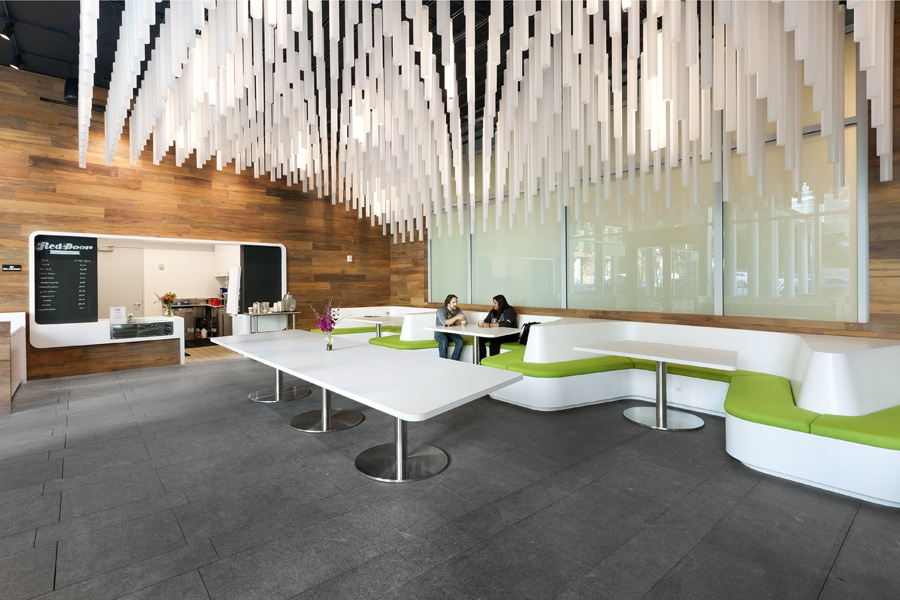
Choosing a partner with expertise in commercial renovation is crucial: the right partner means a smooth, successful commercial renovation from planning to execution, with clear open communication and full cost transparency. Look for a team with experience managing similar renovations and can provide examples of their work.
It’s critical that any renovation partner you choose communicates effectively, listens to your needs, and offers tailored solutions. Ensure they have a thorough understanding of local building codes and regulations to streamline the permitting process, and look for commercial general contractors who are detail-oriented and proactive problem solvers to keep the project on track.
READ NEXT
